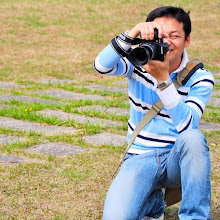This is a media tour for Traveler Luxe magazine, invited and organized by JTB. Traveler Luxe magazine is a publication issued by MOOK group. Also, this is my first job with MOOK.
2010年代表旅人誌參加的媒體團,也是我第一次與城邦集團的MOOK墨刻出版的合作,謝謝香君學姐的推薦。
↓First stop is Karuizawa, about 1hr Shinkanshen ride from Tokyo. 首站輕井澤,從東京搭新幹線約1小時車程。
↓During the Meiji period, a Canadian missionary Alexander Croft Shaw built a cottage in the "Kyu Karuizawa" town, since then Karuizawa had become the place to escape the summer heat in the great Tokyo area. The exotic "Kyu Karuizawa", which was crowded with foreigners, is still very popular among foreign travellers. Built in 1895, the Karuizawa Shaw Memorial Chapel is the first church for foreigners, and thus the Holy Land Karuizawa has been created. 明治28年,傳教士亞歷山大.蕭來到輕井澤,開始宣揚輕井澤為理想的避暑勝地,因此他也被稱為輕井澤之父。
↓St. Paul's Catholic church was established in 1935 by Priest Wald. This famous wooden structure was designed by Antonin Raymond. 聖保羅教堂可說是輕井澤的代表景點之一。
↓The Old Mikasa Hotel is the only pure Western style wooden-structure hotel building in Japan. Operated during 1906-1970, it is now preserved as one of the "Important Cultural Heritage" of Japan. Is it so important and delicate that photography inside the building is prohibited. 舊三笠飯店被日本政府列為重要文化財產,因為它是日本現存唯一木造的純西洋式的旅館建築。1906年開業,一直經營了64年。管理單位保護它不遺餘力,甚至不准我們入內拍照。
↓It's very interesting to see the adaptation of a foreign religion into Japan heritage. This sort of stone carving is usually used for little god statue in Japanese Shintoism. 很有趣的文化融合,聖母像以日本常見的沙彌石雕出現。 St. Paul's Catholic Church, Karuizawa, Japan 聖保羅教堂,日本輕井澤
↓Second stop is Kusatsu, known for its high-quality hot spring(onsen). 第二站草津,以優質硫酸溫泉聞名。
↓Yubatake(湯畑), or "hot water field", is a set of wooden boxes used to collect minerals of hot spring water in Kusatsu, Japan. As the main tourist attraction spot, yubatake represents the quality and the abundant water output of the spring source. The local hot-spring hotel alliance thus announced "Onsen-ism" to cerebrate this gift of nature in 2001.
"湯畑"是草津溫泉獨有的景觀,是以一串連結起來的木箱來收集溫泉中的礦物質,乾燥之後做成"湯の花",可以給遊客買回家泡。由於泉質優良,湧出量也居全日本第一,當地的溫泉旅館協同組合因此在2001年提出"泉質主義"來宣揚草津溫泉。
↓Yumomi is a traditional method of cooling down hot spring water to bathing temperature by stirring the water with large wooden paddles. The process is accompanied by the singing of a local folk song.
A yumomi performance for tourists is held daily in the Netsunoyu Bath House just next to the yubatake. The performance includes a yumomi and dance performance, and several people from the audience have the opportunity to partake in yumomi.
湯揉是草津溫泉的獨有傳統。因為泉水溫度太高,約55度,又不願加普通冷水破壞泉質,因此先民發展出這種以木板條攪拌溫泉水降溫的方式,由於耗費時間,這種泡湯方式又名「時間湯」。
現今遊客可以在湯畑旁邊的「熱之湯」觀賞公開的湯揉表演,這種表演又加上傳統歌謠的吟誦,很有趣味,遊客也有機會親自上場,體驗執木板拌湯的樂趣,主辦單位也會致贈紀念品一份。
↓In Kusatsu, the water from some hot spring source is extremely hot that it can be used to boil eggs.
草津溫泉有些源頭的水溫太高,可以用來煮蛋。
↓Recently, the authority holds a special "Illumination" program from November to March, setting various light installations that adds more holiday atmosphere.
近年來自歲末年終到3月底,他們也設立了特別的燈光裝置,來為湯畑增添更多溫馨的節慶氣氛。
湯畑 Illumination website
↓As the highlight of the seasonal Illumination program, the Yubatake Illumination Committee brought out a 5-day event "Special Lightup". At 7 p.m. to 10 p.m., March 11-14, the committee added colorful spotlight show accompanying with classic music.
作為整個燈節的高潮,主辦單位在3/11-14每晚7點到10點更舉辦了特別燈光秀,以五彩燈光伴隨音樂,讓整個湯畑籠罩在夢幻的氛圍中。
View all the photos 看所有照片Press here 請按此。
分類 Categories: 旅行紀錄 Travel






